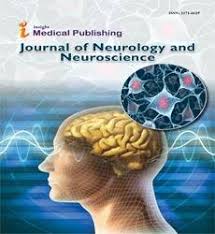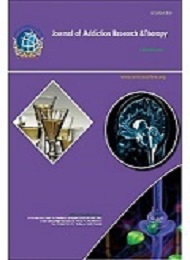Track 1. Prevention and control of Tobacco use
Prevention and control of tobacco among youth and young adults involve , avoid the exposure of secondhand smoke, identify and put end to tobacco-related disparities.Tobacco related substances include cigarettes, cigars, pipes, hookah, smokeless tobacco, and others. Programs including educational, regulatory, economic, and social strategies at local, state, or national levels. Increase in the price of tobacco products results to decreases the products of tobacco usages.
Track 2. Adolescent tobacco cessation
Tobacco cessation is very important in the adolescents because intervention at this time may prevent nicotine dependence and severe health problems. Adulthood smoking is closely associated with smoking during adolescence: 90 percent of adult smokers smoked their first cigarette on or before 18 years .Youth are more exposed to nicotine, when compared to adults. Quit smoking methods including smoking bans, adolescent smoking cessation programs, and pharmacological interventions are encourage to support smoking cessation in adults.
Track 3. Behavioral counselling
Behavioural Counseling is focused on behavior of human and helps to eradicate unwanted or nonadaptive behavior. Generally this type of therapy is used for those with behavioral problems or mental health conditions that involve addiction and others. It based on the idea of that all behaviors are learned and unwanted behaviors can be changed. Changing the pattern of thinking, Social support are help the smokers to stop smoking. The behavioral treatment is the process of learning new more effective behaviors.
Track 4. Cognitive behavior therapy
Cognitive behavior therapy is a psychotherapy used to treat many psychological problems. This therapy is based on changing maladaptive pattern of thinking and the unwanted behaviors. It is a "problem focused" and "action oriented" therapy, means it is used to address and identified goals and decrease symptoms of the disorder and focuses on challenging and changing unhelpful cognitive deformities like thoughts, beliefs, attitudes and behaviors and improving emotional regulation.
Track 5. Smoking cessation counselling and therapy
Smoking Therapy is helpful to addressing and treating the causes of a smoking. If the stress creates the urge to smoke, therapy that encourages the methods that can reduce the desire to smoke in challenging and overwhelming situations. If smoking is a coping method to deal with the symptoms of a mental health condition, alternative coping methods may be developed through therapy, and treatment can also focus on the underlying cause of the mental health issue. If symptoms of mental condition recede, so might the desire to smoke. An awareness of quit for smoking can be gained in therapy If anyone smoke, counsel them to prevent and reduce children's exposure to secondhand smoke.
Track 6. Drug interactions with smoking
Numerous drug interactions exist with smoking. Therefore, smokers taking a medication of higher dosage than nonsmokers. Polycyclic aromatic hydrocarbons of tobacco have been associated with the induction of CYP enzymes. By using CYP1A1, CYP1A2, CYP2E1 and UGT enzymes, drugs which are metabolized might be affected by tobacco smoking and the smokers who are taking the medications metabolized by those enzymes, may need higher dosage due to lowered plasma concentrations through enhanced induction by PAHs of tobacco smoke. The pharmacists are to be aware of medications affected by tobacco smoking to prevent the toxicity-associated complications during smoking cessation.
Track 7. Nicotine addiction
Nicotine is an addictive chemical substance present in all tobacco products. Liver metabolized the nicotine present in blood and excreted from the kidney. After smoking, Nicotine can be remain in the blood for six to eight hours. Brain is filled with nicotine receptors. These receptors eagerly await for incoming nicotine. When the nicotine unlocks the nicotine receptors, a chemical called dopamine is released. Nicotine is an addictive chemical substance present in all tobacco products. Liver metabolized the nicotine present in blood and excreted from the kidney. After smoking, Nicotine can be remain in the blood for six to eight hours. Brain is filled with nicotine receptors. These receptors eagerly await for incoming nicotine. When the nicotine unlocks the nicotine receptors, a chemical called dopamine is released.
Track 8. Nicotine replacement therapy
Nicotine replacement therapy is the process of giving the nicotine in the form of gums, patches, sprays, inhalers, or lozenges .NRT reduces withdrawal feelings by giving a controlled amount of nicotine but no dangerous chemicals found in cigarettes. This small amount of nicotine helps to satisfy your desire for nicotine and reduces the urge to smoke. Nicotine replacement along with counseling has been proven to improve tobacco abstinence rates.
Track 9. Nicotine-appetite suppressant
Nicotine may be an appetite suppressant, which include elevated blood pressure, heart rate, and gastric motility while eliciting a sustained decrease in food intake.When Caffeine added to nicotine chewing gum its reduce effects on appetite.Nicotine gum has similar effects to cigarettes in terms of appetite suppression, and people who do not smoke, but nicotine gum are used for the purpose of weight control or weight loss. Nicotine can also decrease insulin levels in a bloodstream, which can reduce cravings for sugary foods.Nicotine triggered effects of adrenaline hormone on the stomach musculature leads to temporary feelings of subsided hunger.
Track 10. Adolescent smoking
Smoking is a substantial problem in adolescence. Adolescents have greater nicotine-induced pleasurable effects during smoking than adults .This may result in rapid continued use of nicotine dependence. Adolescence smoking has effects on cognition, neurobiology, drug-related behaviors which are different from effects which occur with individuals who initiate smoking in adulthood.
Track 11. Passive smoking
The process of inhalation and expose of smoke indirectly from the active smoker is called Passive Smoking .Second-hand smoking is particularly dangerous for children who exposed to passive smoke which leads to many diseases.
Track 12. Smoking and Infertility
chemicals present in tobacco such as nicotine, cyanide, and carbon monoxide leads to speed up the loss rate of eggs. If the eggs die off, they cannot be regenerate or be replaced. This means the menopause occurs 1 to 4 years before when compared with non-smokers. Many do not realize that smoking can also lead to reproductive problems in both men and women.
Track 13. Smoking and Oral health
Tobacco and related products can lead to oral diseases by affecting the attachment of bone and soft tissue to your teeth. Mostly, the smoking interferes with the normal function of gum tissue cells. This leads to smokers are more susceptible to infections, such as periodontal disease, and impair blood flow to the gums - which may affect wound healing.
Track 14. Smoking and Respiratory diseases
Smoke is directly inhaled into the lungs and its components are deposited there, this leads to adverse effects on the respiratory system and causes malignant and nonmalignant diseases, exacerbates chronic lung diseases, and increases the risk for respiratory infections.
Track 15. Tobacco Induced Diseases
Tobacco Induced Diseases includes all aspects of related to the prevention and control of tobacco use. Tobacco cause of death and disability. Tobacco smoking poses a risk to health problems due to the inhalation of dangerous chemicals in tobacco smoke such as carbon monoxide, cyanide, and carcinogens which leads to heart and lung diseases and Cancer.






